
Soy Ingredient Index
From soy flour to high oleic soybean oil, soy products have a variety of applications in the food industry. They can enhance your culinary creations, improve nutritional profiles and support healthier eating choices for consumers.
Use this index to explore the diverse range of uses for soy-based ingredients and learn how they can add value to your food, products and menus.
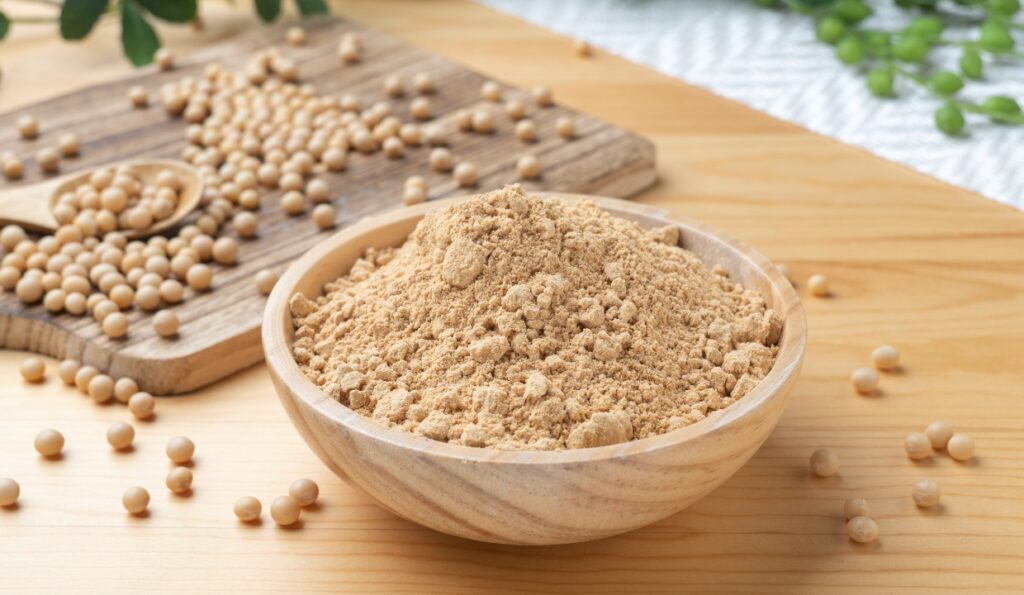
DEFATTED OR FULL
FAT SOY FLOUR
What is it:
A versatile, protein-rich flour that is ground from dehulled, defatted soybean flakes.
Uses:
Baked goods; cereals; snacks; sauces; gravies.
A replacement for wheat flour for gluten-free foods.
Benefits:
Good source of protein; minimum 50% protein.
Can improve texture, moistness, and shelf life of bakery products.
Exhibits thickening and binding properties.
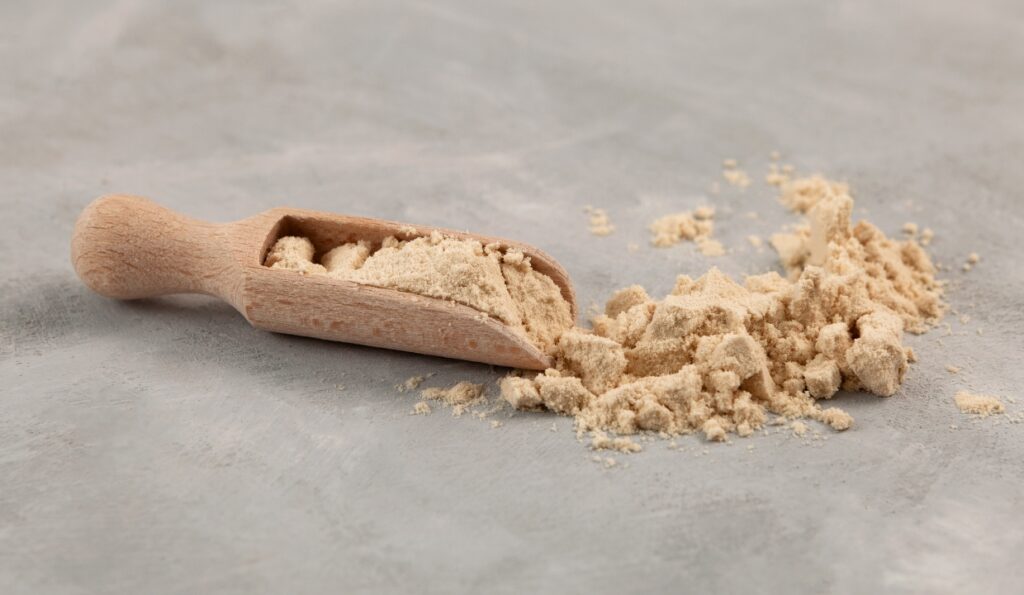
HYDROLYZED SOY PROTEIN
What is it:
Derived from the process that breaks down soy protein into its amino acids.
Uses:
Used as a building block in many savory flavor systems – seasonings, soups, sauces, gravies, marinades, snacks, and side dishes.
Benefits:
Enhances savory flavor impact.
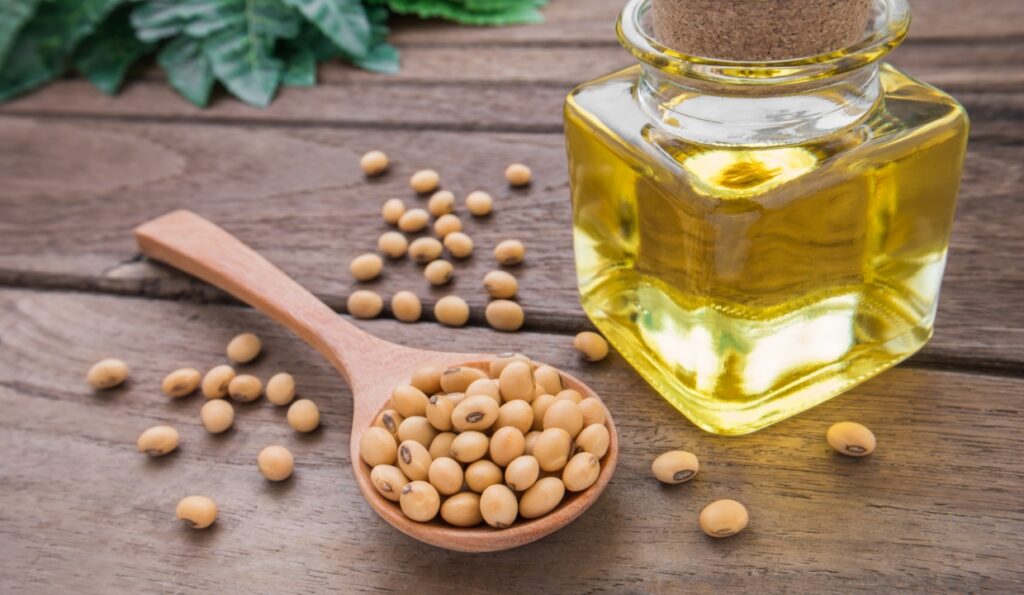
CONVENTIONAL SOYBEAN OIL
What is it:
Oil extracted from soybeans; commonly labeled vegetable oil.
Uses:
Dressings; mayonnaise; baked goods; snacks; packaged goods.
Benefits:
May help lower cholesterol and reduce the risk of coronary heart disease; neutral flavor profile; source of omega-3s.
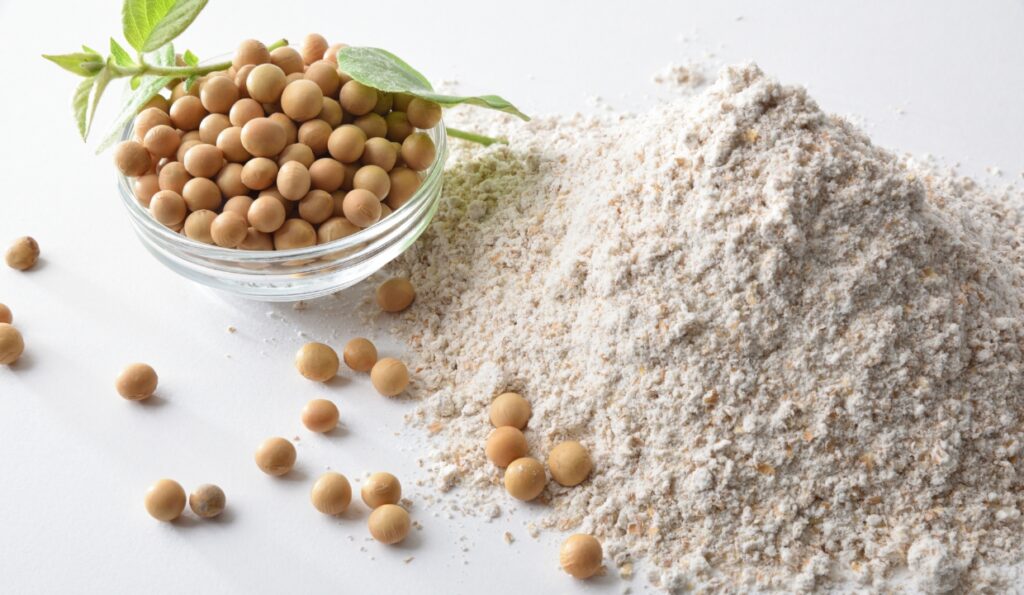
SOY GRITS
What is it:
Coarsely ground whole soybeans.
Uses:
Crackers; cookies; breads, cereals.
Benefits:
Source of fiber; source of protein.
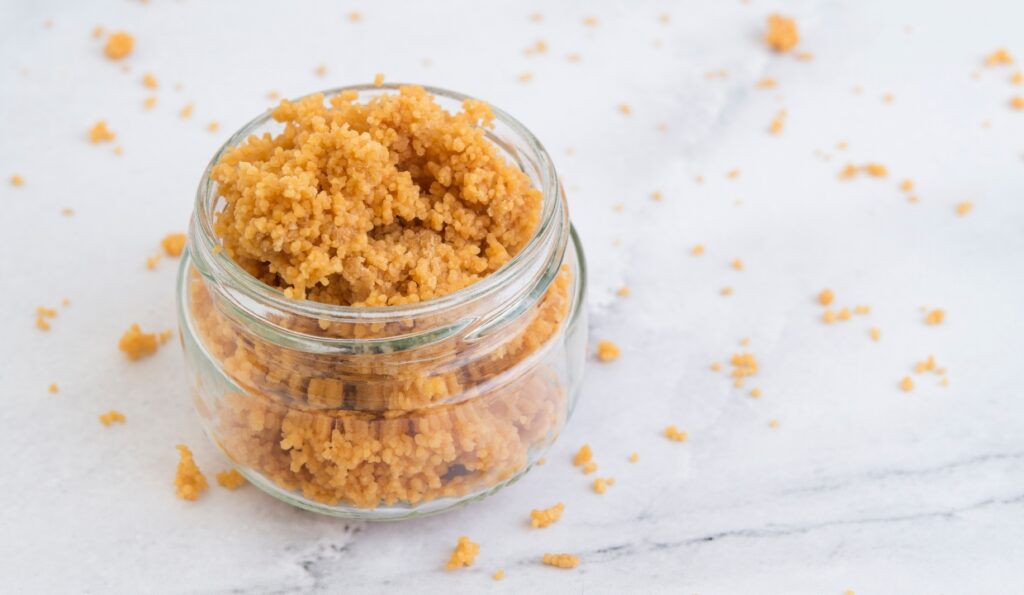
SOY LECITHIN
What is it:
A highly versatile emulsifier and natural component of soybean oil.
Uses:
Dietary supplements; infant formulas; processed foods; release agent in bakery and cooking sprays; anti-dusting and wetting agent in powders.
Benefits:
Improves texture and consistency; reduces spattering; improves dispersion; viscosity reduction in chocolate; prevents fat separation; source of choline.

SOY PROTEIN ISOLATE
What is it:
Minimum 90% protein ingredient, derived from dehulled, defatted soybean flakes.
Uses:
Protein bars; cereals; nutritional beverages, processed meats (emulsified, ground and injected), plant-based meat alternatives and more.
Benefits:
High-quality, plant-based protein; may help lower cholesterol and reduce the risk of coronary heart disease; supports muscle maintenance and growth; healthy weight loss. Valued as a versatile, functional ingredient for protein fortification and as a nutritional, economic alternative to dairy and meat protein. Exhibits a range of gelling, emulsification, dispersibility, solubility properties, specific to the requirements of the target end application.

WHOLE SOYBEAN OR SOYA
What is it:
Soybeans, with the hull removed and oil intact.
Uses:
Used as a food ingredient – as roasted whole soybeans or as edamame. The starting point for making many traditional soy foods, including soymilk and tofu.
Benefits:
Good source of protein; source of fiber.

HYDROGENATED SOYBEAN OIL
What is it:
Soybean oil with a semi-solid consistency.
Uses:
Commonly used as a component of shortening, margarine and cooking oils.
Benefits:
Neutral flavor; improved oxidative stability.

OKARA (SOY PULP)
What is it:
Byproduct of soymilk and tofu production, that can be dried and milled into a flour.
Uses:
Dried and milled into flour and used in snacks or biscuits; replacement for flour in baking.
Benefits:
Source of fiber and protein.

SOY PROTEIN CRISPS
What is it:
Extruded, high-protein crisps made from soy protein ingredients, typically soy protein isolate.
Uses:
High-protein nutrition bars; snack bars; cereals; yogurt toppings.
Benefits:
High quality source of protein; delivers crispy, crunchy texture in foods. Offerings vary in shape, texture, sizes and protein content.
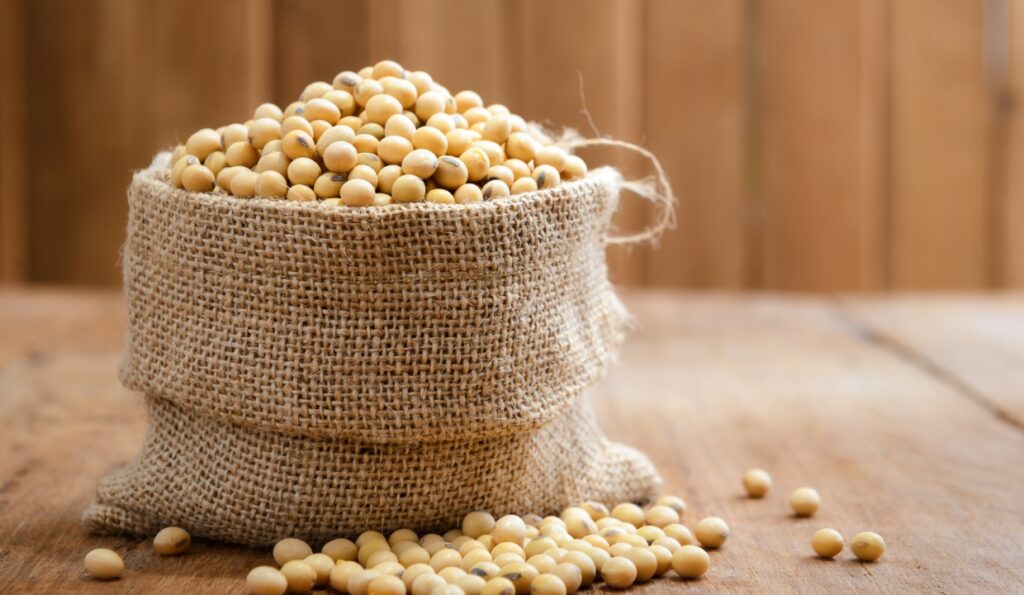
SOY FIBER
What is it:
Dietary fiber extracted from soybean hulls or the soybean cotyledon.
Uses:
Nutrition bars; beverages; baked goods; cereals; snack foods.
Benefits:
Good source of fiber.

SOY PROTEIN CONCENTRATE
What is it:
Minimum 65% protein ingredient, derived from defatted, dehulled soybean flakes.
Uses:
Processed meat (emulsified, ground and injected) and plant-based meat alternative. Cereals and snacks.
Benefits:
Good source of protein; source of fiber. Water-binding and strong gelling performance.
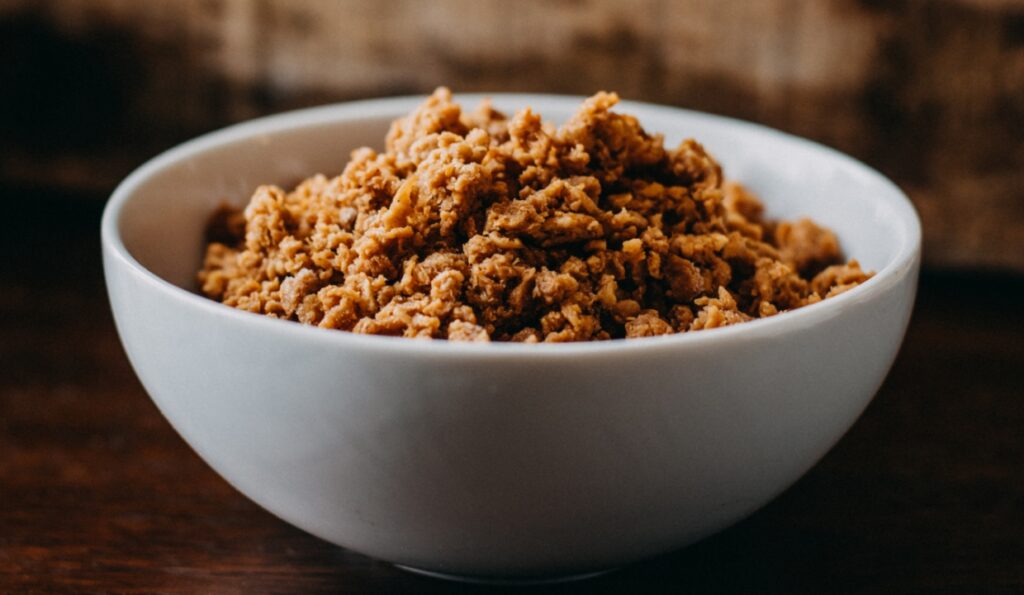
TEXTURED SOY PROTEIN CONCENTRATE (TSPC)
What is it:
Manufactured from soy protein concentrate.
Uses:
Formed meat products such as beef patties, chicken nuggets and sausages; plant-based meat alternatives and more.
Benefits:
Good source of protein (65%); source of fiber; source of isoflavones. When hydrated, delivers meat-like texture and fibrosity.

TEXTURED VEGETABLE PROTEIN (TVP)
What is it:
Manufactured from soy flour.
Uses:
Formed meat products such as beef patties, chicken nuggets and sausages; plant-based meat alternatives and more.
Benefits:
Good source of protein (50%); source of fiber; source of isoflavones; cost effective. When hydrated, delivers meat-like texture and fibrosity.
